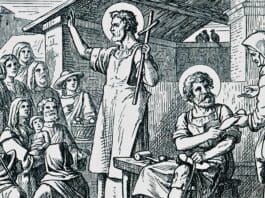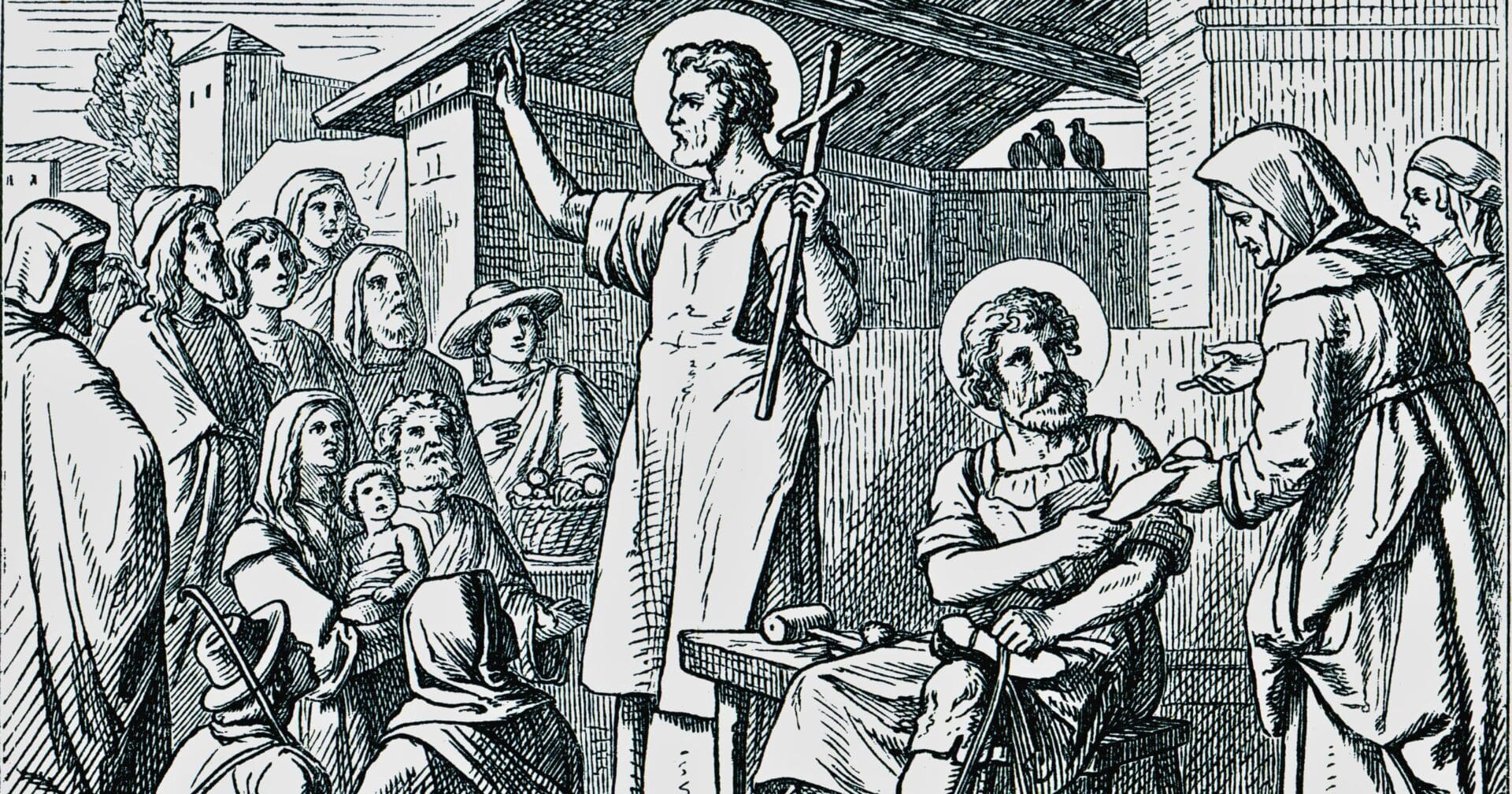
Saints Crispin and Crispinian, revered martyrs from the Early Church era, are celebrated for their unwavering faith and dedication to Christian missionary work. Their lives came to a tragic end under the reign of Emperor Diocletian, with their execution date recorded as October 25, 285 or 286. Though widely believed to be brothers, concrete evidence to confirm their familial connection remains elusive.
Originating from a noble Roman background, Crispin and Crispinian chose the city of Soissons in Gaul as their missionary territory. Emulating the Apostle Paul, they engaged in shoemaking to sustain themselves, simultaneously using their earnings to assist the impoverished.
Their steadfast faith brought them into confrontation with Maximianus Herculius, the co-emperor appointed by Diocletian. Maximianus initially attempted to sway them from their beliefs through a combination of promises and threats. Unfazed, Crispin and Crispinian responded, “Thy threats do not terrify us, for Christ is our life, and death is our gain. Thy rank and possessions are nought to us, for we have long before this sacrificed the like for the sake of Christ and rejoice in what we have done. If thou should’st acknowledge and love Christ thou wouldst give not only all the treasures of this life, but even the glory of thy crown itself in order through the exercise of compassion to win eternal life.”
Realizing his efforts were futile, Maximianus handed them over to Rictiovarus (Rictius Varus), a notorious persecutor of Christians. Under Rictiovarus’ orders, they endured horrendous torture yet miraculously survived a subsequent drowning attempt and a perilous fire. Rictiovarus, driven to despair, took his own life. Ultimately, Maximianus ordered the beheading of Saints Crispin and Crispinian.
In the sixth century, a grand basilica was built over their burial site in Soissons. Saint Eligius, a distinguished goldsmith, crafted an elaborate shrine for St. Crispinian’s head. Some of their relics were transported to Rome, finding a home in the church of San Lorenzo in Panisperna, while others were bestowed upon the cathedral at Osnabrück by Charlemagne, marking the dedication of this cathedral to Saints Crispin and Crispinian.
Today, Saints Crispin and Crispinian are celebrated as the patron saints of shoemakers, saddlers, and tanners.
Photo credit: Sergey Kohl / Shutterstock.com
The post Saints Crispin and Crispinian appeared first on uCatholic.
Daily Reading
Memorial of Saints Basil the Great and Gregory Nazianzen, Bishops and Doctors of the Church
Readings for the Memorial of Saints Basil the Great and Gregory Nazianzen, Bishops and Doctors of the Church Reading 1 1 John 2:22-28 Beloved: Who is the liar? Whoever denies…
Daily Meditation
A Voice in Today’s WildernessUna voz en la jungla de hoy día
Click here for daily readings Today’s Gospel passage is especially relevant as we begin a new year with resolutions and hope. In this reading we hear John’s declaration echoing the…




